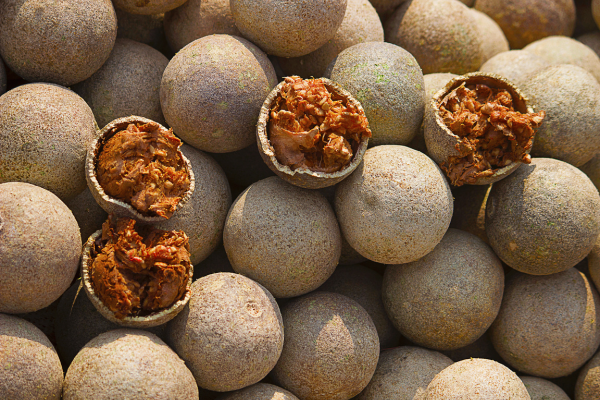Discovering the Delights of Wood Apple: Sri Lanka’s Exotic Treasure – By Nadeeka – eLanka

Nestled within the tropical paradise of Sri Lanka lies a fruit both mysterious and marvelous: the Wood Apple. Also known as “Divil” in Sinhala, this unique fruit holds a special place in the island’s culinary and cultural tapestry. Let’s delve into the fascinating world of the Wood Apple and uncover its many wonders.
Introduction to Wood Apple: The Wood Apple (Aegle marmelos) is a fruit native to the Indian subcontinent, including Sri Lanka. Encased in a hard, woody shell, its rough exterior belies the deliciously tangy pulp concealed within. Revered for its medicinal properties and distinct flavor, the Wood Apple has been cherished for centuries by the people of Sri Lanka.
Cultural Significance: In Sri Lanka, the Wood Apple is not just a fruit; it’s a cultural icon steeped in tradition. From religious rituals to culinary delights, this fruit plays a prominent role in various aspects of Sri Lankan life. It is often offered at temples as a symbol of devotion and is also a staple ingredient in traditional Ayurvedic medicine, valued for its digestive properties and ability to cool the body.
Nutritional Benefits: Despite its humble appearance, the Wood Apple packs a nutritional punch. Rich in vitamins, minerals, and antioxidants, it offers a plethora of health benefits. The fruit is a good source of vitamin C, fiber, and calcium, making it ideal for boosting immunity, aiding digestion, and promoting bone health.
Culinary Uses: In Sri Lankan cuisine, the Wood Apple is celebrated for its versatility. The pulp can be enjoyed in various forms, including jams, chutneys, and beverages. One popular delicacy is “Wood Apple Milk,” a refreshing drink made by blending the pulp with milk, sugar, and ice. Additionally, the tangy flavor of the Wood Apple adds depth to savory dishes, such as curries and sambols, creating a symphony of flavors that tantalize the taste buds.
Harvesting and Preparation: Harvesting Wood Apples requires patience and skill. The fruits are typically harvested when fully ripe, as indicated by their distinctive aroma and slightly softened texture. Once harvested, the hard outer shell is cracked open to reveal the pulpy interior, which is then scooped out and processed according to preference.
Conservation Efforts: Despite its cultural significance, the Wood Apple faces challenges due to habitat loss and deforestation. Efforts are underway to conserve this precious fruit and promote sustainable harvesting practices to ensure its survival for future generations. By raising awareness and supporting local initiatives, we can preserve the legacy of the Wood Apple for years to come.
Conclusion: In conclusion, the Wood Apple stands as a testament to the rich biodiversity and cultural heritage of Sri Lanka. From its medicinal properties to its culinary delights, this exotic fruit continues to enchant and inspire all who have the pleasure of experiencing its wonders. As we savor its tangy sweetness and embrace its legacy, let us celebrate the enduring legacy of the Wood Apple as a symbol of Sri Lanka’s natural abundance and cultural richness.







